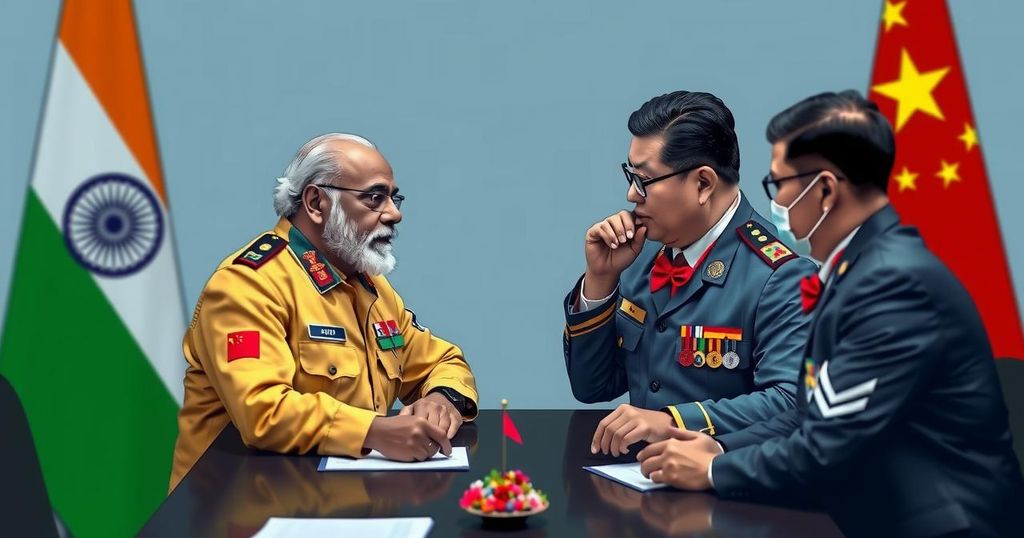India and China Reach Agreement on Patrolling Along LAC After Four-Year Standoff
India and China have reached a significant agreement on patrolling along the Line of Actual Control (LAC), effectively restoring the pre-2020 status and marking the completion of the disengagement process after four years of tensions. External Affairs Minister S. Jaishankar highlighted the potential for high-level meetings between Indian and Chinese leaders during the Brics Summit in Russia, emphasizing the importance of peace along the border for the normalization of bilateral ties.
India and China have come to a landmark agreement concerning patrolling along the Line of Actual Control (LAC), marking significant progress after a prolonged military standoff that has persisted for four years. This agreement was announced on Monday by India’s External Affairs Minister, S. Jaishankar, who emphasized that both nations have reverted to the pre-existing conditions of the LAC as they stood in 2020, signifying the completion of the disengagement process with China. During a media briefing on Prime Minister Narendra Modi’s upcoming visit to Russia, Foreign Secretary Vikram Misri elaborated on the agreement, attributing it to extensive discussions conducted through both diplomatic and military channels over the preceding weeks. Jaishankar described the development as a “good” and “positive” outcome, albeit without a corresponding official confirmation from the Chinese authorities. The agreement potentially paves the way for a high-level meeting between Prime Minister Modi and Chinese President Xi Jinping, coinciding with the Brics Summit slated to take place in Kazan, Russia. Reports suggest that the Indian and Chinese sides have yet to finalize details for such a meeting, even as sentiments surrounding the announcement have been viewed positively. The tensions along the LAC escalated notably following a violent clash at Galwan Valley in June 2020, which resulted in the fatalities of Indian and Chinese soldiers, marking a significant deterioration in bilateral relations. Jaishankar reaffirmed that normalization of relations necessitates a stable peace along the border, which has been disrupted since the commencement of hostilities in May 2020. Previous conversations among officials have facilitated the withdrawal of troops from strategically critical locations such as Pangong Lake, Gogra, and Hot Spring. However, complications remain at two pivotal points, Depsang and Demchok, where tensions persist due to the Chinese blockade of Indian access to key patrolling positions. Misri remarked that the discussions have led to a resolution at various contentious locations, while also acknowledging some unresolved standoffs. Jaishankar expressed optimism regarding the reestablishment of patrolling rights analogous to those in 2020, highlighting that both parties have come to an essential understanding concerning the sanctity of the LAC henceforth. Security expert Sameer Patil underscored the necessity for India and China to cultivate trust, which has diminished amid military tensions, noting that while the patrolling agreement marks progress, the true impact will depend on implementation on the ground and the subsequent restoration of mutual trust and confidence between the forces deployed along the border.
The ongoing border tensions between India and China have their roots in complex historical disputes over territory and sovereignty. The most recent standoff intensified following a clash at Galwan Valley in June 2020, marking the first fatalities in the region since the Sino-Indian War of 1962. This conflict has led to a massive military buildup on both sides, involving close to 60,000 troops each. Despite numerous rounds of diplomatic and military talks aimed at de-escalation, significant mistrust remained. The agreement reached marks a potential turning point in normalizing relations, focusing on reestablishing peace and managing border interactions.
The recent agreement between India and China on patrolling along the LAC signifies a critical milestone in stabilizing relations that have been under strain for the last four years. With both nations returning to the status quo of 2020, there remains cautious optimism regarding future diplomatic engagements. However, the complexity of rebuilding trust and ensuring military cooperation presents ongoing challenges that require careful navigation in the coming months. The successful implementation of the agreement will be crucial in determining the trajectory of India-China relations moving forward.
Original Source: www.hindustantimes.com







Post Comment